Photo by Mahina Expeditions
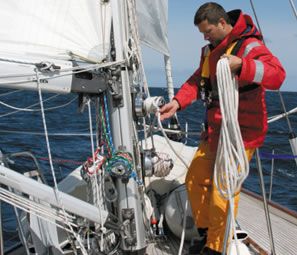
Choosing a new set of foul-weather gear is not a decision most sailors take lightly. With mid-range gear priced around $500 for a jacket and bibbed trousers, it isn’t a small investment. Knowing what specific brands have to offer-and what to look for-is key to making a sound purchase, and to ensuring youll be warm and dry aboard.
Advancements in fabric technology and manufacturing processes are making it harder to tell the difference between the various brands of foul-weather gear. As a result, its the attention to quality and detail that often makes the real difference, as we found during Practical Sailor field tests.
In recent years, foulie manufacturers have acknowledged that women sailors are simply not satisfied with wearing smaller-size mens garments. After all, the female body is shaped differently from the male, so the tailoring of foul-weather gear should seemingly follow suit. Manufacturers such as Gill, Helly Hansen, Henri Lloyd, and West Marine offer women-specific foulies, which we will be reviewing in an upcoming issue. This article focuses solely on mens and unisex foul-weather gear.
What We Tested
Practical Sailor tested mid-range foul-weather gear from marine manufacturers Gill, Grundens, Helly Hansen, Henri Lloyd, and West Marine. We set the price maximum at approximately $500 for a jacket and bibbed trousers combo. We included some gear that exceeded this threshold in order to see how a $500 kit compares to more expensive kits. A test of higher-end foul-weather gear from these makers and others like Musto, is in the works.
Field testers wore the foulie kits regularly over three months. (See the accompanying How We Tested for test details.) We found most products featured the common denominators of a fluorescent green-yellow hood with reflective properties, YKK zippers, sleeves with inner seals at the wrists, a storm flap at the neck, drawstring closures, and a pocket for small items.
Sizing was not standardized, so that a mens large in one brand might be far too roomy for the sailor accustomed to wearing that size in street clothing. We highly advise trying on jacket and trousers before buying.
Helly Hansen offers a variety of jackets and bibs for both inshore and offshore adventures. The mens Helly gear we tested included the Offshore jacket and Ocean trousers, Offshore Race jacket and trousers, Crew Coastal 2 jacket and Crew Coastal trousers, and the Skagen and Salt jackets. The Offshore Race jacket was dropped from the test lineup after its zipper refused to work. The front YKK zipper would not line up and zip, despite attempts by three testers, making wind- and water-resistance tests impossible.
Best known for commercial fishing rain gear, Grundens has created a line of foul-weather gear for recreational boaters, so we tested its Balder jacket and bibs.
From Gill, we tested the OS2 jacket and bibs and the Coast kit. Henri Lloyd was represented with the Osprey jacket and Ultimate Cruiser bibs. And rounding out the test field were two kits from retail giant West Marine, the Navigator and the Third Reef.
Gill OS2
The Gill OS2 jacket and OS2 bibs are just about everything a sailor might want or need for offshore or coastal sailing. The jacket is comfortable and relatively lightweight. It has a high-cut, fleece-lined collar, and a mesh liner at the neck and shoulders for comfort and breathability. The greenish-yellow jacket color, which Gill has dubbed lime, is highly visible; the OS2 is also available in graphite, yellow, and red.
Waterproof and windproof, the jacket is made from Gills trademarked 3-Dot soft-touch, two-layered, laminated fabric. All seams are fully taped to create a waterproof seal. The fleece inner collar and chin guard protect against chafing. A heavy-duty, two-way YKK zipper provides easy doffing and donning.
The jackets two deep cargo pockets and four hand-warmer pockets are welcome features. A zippered internal security pocket offers a place to store small items.
The fluorescent, rollaway hood provides good visibility. It has a visor, is stiff enough at the peak to shed water, features a reflective patch, and can be stowed in the collar.
The bibs, which have an elasticized waist, are designed for comfort and can be easily donned, doffed, and adjusted. The Gill trousers have a superior fastening system at the ankles. The Velcro strap, instead of simply affixing to a Velcro patch, first travels through a plastic slide, also known as a ladder lock fitting on backpacks. This makes the connection more secure and reduces the possibility that the strap will be accidentally pulled loose when rubbing against a shroud en route to a foredeck sail change.
Gills innovative, retractable outer cuff adjusters were a different matter. The design tended to gather and bunch up at the wrist, which proved uncomfortable and made it more difficult to get a tight seal with the inner seals. A design similar to that on the 0S2 trouser ankles might make more sense for the jacket.
The adjustable shock cord at the hem significantly increased the jackets wind resistance. Loops inside and outside near the collar made it easy to stow the jacket or hang it while drying.
The Gill OS2 kit shined during the five-minute wind-resistance and water-resistance tests, and was rated Good or Excellent in every test category.
Bottom line: The OS2 jacket and trousers are the ideal mid-range kit for the serious sailor who is headed offshore but isn’t looking to spend $1,000 on foul-weather gear. The $550 combo is our Best Choice for a set in the $500 range.
Gill Coast Jacket
We also tested the Gill Coast jacket and trousers, made with the manufacturers patented 2-Dot fabric. The Coast jacket features reflective patches on the shoulders and chest, large-capacity cargo pockets, twin fleece-lined hand-warmer pockets, and a two-way front zipper that is protected by a storm flap. The sleeves have adjustable cuffs with Velcro straps and inner seals. The jacket has a mid-cut collar and rollaway, fluorescent hood with a reflective patch.
The Coast trousers are fully seam sealed, with a reinforced seat and knees, elasticized waist, front zipper with generous internal gusset for wet weather protection, and adjustable Velcro ankle closures.
Although certainly not as heavy-duty and impervious to weather as the Gill OS2 kit, the Coast gear can handle weather elements typically found in the most challenging coastal waters.
The Coast bibs are less heavy-duty than the OS2. However, they have plenty of abrasion protection on the knees and seat.
Bottom line: The Coast jacket and bibs create a robust kit for the sailor who plans to sail coastal waters or those in warmer locales.
Grundens
Grundens offered to participate in the field test to see how its Balder jacket and bibs compared to foul-weather gear designed specifically for the recreational sailor.
Our testers found that the bibs were easy to don and doff, mostly due to the garments voluminous cut and the snap-buckle shoulder straps. The wide straps were comfortable and didnt dig into testers shoulders.
Grundens doesn’t design gear for women. As a result, a woman who typically wears a size 6 would find room to spare in the XS mens size. The baggy design was particularly noticeable-for men and women-around the waist and at the crotch, which was cut so low it restricted movement. The waist can be slightly adjusted.
The weighty jacket and trouser material has a distinctly rubbery feel, more like rainwear than what is now considered common sailing performance gear. The jacket uses a series of metal snaps for closure, which can become laborious compared to a strong and efficient zipper.
The Grundens jacket has seals at the cuffs, but water can still run up the arm if immersed, as it did during bucket immersion testing. The trousers are without any seal at the ankle, perhaps to accommodate tall and wide fishing boots. Despite these shortcomings, the Grundens kept wearers dry and warm during tests.
Unlike typical sailing foulies, the Grundens kit has no exterior pockets on either the jacket or trousers. A single, small pocket is sewn inside the bibs but is difficult to access without undoing the jacket snaps.
The orange and black kit didnt offer much in the way of safety reflectors, but its highly visible in daylight, and it was stylish enough to not simply conjure images of The Deadliest Catch.
Bottom line: We know some sailors who prefer the Grundens and similar gear for use in high latitudes, but in order for them to appeal to the wider recreational sailing market, a little tweaking is in order.
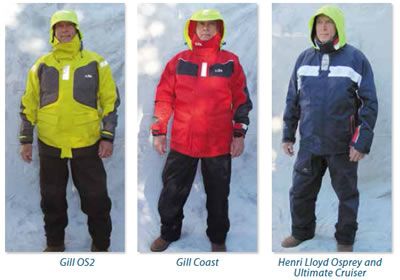
Henri Lloyd
We tested the Henri Lloyd mens Osprey inshore jacket and the Ultimate Cruiser hi-fit bibs. Both are made with Henri Lloyds TP fabric technology, which is marketed as waterproof, windproof, breathable, and durable.
The Osprey inshore jacket was lightweight and comfortable, but it lacked the key features-like hood windows and a variety of pockets-of Henry Lloyds Ultimate Cruiser jacket, which was tested for the upcoming report on womens foul-weather gear.
We noted some wind penetrated the Osprey inshore jacket during tests with an artificial breeze from the two industrial-strength fans. As its name implies, the jacket is well suited for day sailing or coastal cruising. The Osprey was among the more comfortable jackets we tested and was contoured to the human form.
The jackets fluorescent hood, which can be stowed in the jacket collar, does not have any Solas reflective patches. The soft hood lacked peak stiffness, and so, it tended to paste to the wearers head during the shower test.
The lined jacket is warm. Drawstring closures at the waist, hood, and hem keep the wearer snug. The jacket has a reflective patch on the chest and two zippered external pockets. There are no internal pockets or any means of ventilation.
Although Practical Sailor did not test the mens Ultimate Cruiser jacket for this report, we found the womens version impressive. The Ultimate Cruiser jacket features Henri Lloyds innovative, high-visibility, foldaway hood that offers increased peripheral vision through a pair of transparent TPU panels engineered into each side of the hood. The Ultimate Cruiser jacket has a nylon-reinforced seat, and dual cargo and hand-warmer pockets. (Stay tuned for the full report in the womens foulie evaluation.)
Bottom line: The Osprey Inshore jacket and Ultimate Cruiser Hi-Fit trousers are a lightweight solution to foul-weather protection, although paying an additional $70 for the mens Ultimate Cruiser jacket would be worth it.
Helly Hansen Offshore, Ocean
Field testers immediately noticed the protective capabilities of the Helly Hansen Offshore jacket and Ocean bibs combination. Part of the companys professional gear selection, the Offshore jacket was nearly impervious to wind and water, yet was breathable enough to keep the wearer from overheating.
Made from patented Helly-Tech fabric, the jacket is designed for long periods of extreme conditions. Heavy-duty construction gives this jacket a weighty feel, but the tailoring distributes the material evenly, and the design contours the human form rather than hanging like a box from the shoulders.
The three-quarter-length jacket looks good and feels good. Two cargo pockets with flaps and Velcro closures are paired with twin hand-warmer slash pockets lined with fleece. At chest level are two compact, zippered pockets for small items.
The fluorescent green, high-visibility hood has a brim, stiff peak, and reflective patch. The high collar is fleece-lined for comfort, and a Velcro wind flap protects the neck.
The only suggested modification would be slightly increasing the size of the jackets front zipper to make it easier to operate, especially with gloved hands. A Velcro flap covers the zipper, further preventing intrusion by wind or water.
The jacket has inner seals at the wrist that can be doubly secured with Velcro straps. The end of the jacket sleeve has its own Velcro strap that can be adjusted. The Velcro tabs are securely sewn. A small, flapped security pocket is sewn inside the jacket. The waist pull cord is strong and easily adjustable.
The Helly Hansen Ocean trousers equal the Offshore jacket in quality construction. Like the jacket, the bibs are built for long-term offshore ocean sailing, and the price reflects it. The material is reinforced throughout for strength and abrasion resistance.
A beefy zipper secures the bibs, but not before tucking in the generous gusset. Shoulder straps are wide, comfortable, and easy to adjust, as are the waist straps. The bibs have a reflective patch on the chest, two zippered, waterproof slash pockets, and heavy-duty Velcro straps at the ankles.
The shower and fan tests had no effect on this foul weather kit. This is the kit you want to be wearing when the weather goes south and youre miles from shore.
Bottom line: This winning combination is definitely not suited for a casual sail along the coast in moderate weather conditions, but if youre looking for bulletproof gear for voyaging, its worth the investment. The $1,375 combo is Recommended for those offshore cruisers who can squeeze it out of their budget.
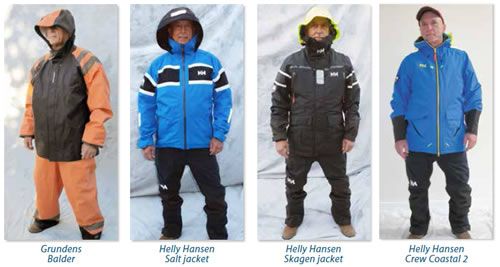
Helly Hansen Crew Coastal
The Helly Hansen Crew Coastal 2 jacket and Crew Coastal bibs offer a waterproof package suitable for sailing coastal waters where staying warm is a priority.
The jacket features a two-ply membrane that keeps water from entering the jacket. The membrane simultaneously allows the release of trapped moisture from body heat, keeping the sailor dry and comfortable.
The three-quarter-length jacket has a Polartec fleece-lined collar for warmth. The hood is high-visibility fluorescent yellow with a reflective patch just above the brim. The hood can be stowed inside the collar when not in use.
The jacket has articulated arms and elbows that ensure free range of motion. Made of 100-percent polyamide, it features a two-way zipper but no storm flap to protect it. Sleeve cuffs have an internal seal tightened with a Velcro tab closure. A second Velcro strap secures the cuffs externally at the end of the sleeves.
The jacket has two cargo pockets with flaps secured by Velcro; two lined, slash, hand-warmer pockets; and a zippered interior pocket for small items. The jacket has a mesh lining for comfort and breathability. A cinch-cord at the waist helps keep out wind and water.
The Crew Coastal trousers have wide, comfortable, easy-to-adjust shoulder straps; a generous zippered gusset; and anti-abrasion patches sewn on the seat and knees. They are secured at the ankles by a Velcro strap.
Bottom line: The Crew Coastal 2 Jacket and Crew Coastal trousers lack some key features required for heavy-weather and offshore sailing, but they are meant for moderate, coastal sailing. At $460 for the kit, they would be worth considering for daysailors and coastal sailors.
Helly Hansen Skagen Jacket
The Helly Hansen Skagen jacket looks good, runs true to size, and fulfills about every foulie need the coastal sailor has, even those who may occasionally venture offshore.
Testers found the three-quarter-length jacket extremely comfortable; its made of Helly Tech fabric and has a double-layer liner that lets moisture out without letting water in. The Skagen features two Polartec-lined hand warmer pockets, two cargo pockets with flaps and Velcro closures, two zippered pockets at chest level, and an interior small pocket with flap and Velcro seal. Theres also an interior mesh pouch for storage.
A flap protects the somewhat under-sized front zipper and secures with Velcro tabs. Reflective patches are sewn to the shoulders, chest, and hood. The high-visibility hood can be rolled and stowed, and a plastic D-ring below the waist offers a place to attach small items like a knife, flashlight, or handheld GPS.
The cuffs are secured with Velcro straps. Internal seals are similarly equipped, ensuring no water enters, even when the sleeve is immersed in a bucket of water. The waist is easily adjusted with an elasticized pull cord.
Bottom line: Waterproof, windproof, and breathable, the Skagen is a contender for the ideal coastal foul-weather jacket in the mid-price range. We Recommend it; pair the Skagen with the Crew Coastal bibs.
Helly Hansen Salt Jacket
Every once in a while, a manufacturer creates a jacket that gets worn because its not only handsome and fits well, but is comfortable and can withstand just about any weather. During tests, the Salt jacket saw extended wear because of its all-around capabilities for every use.
While certainly not designed for offshore, the Helly Hansen Salt jacket is rugged enough for coastal cruising and daysailing. Made of Hellys patented two-layer, performance fabric, the hip-length jacket features a Polartec fleece collar, adjustable hood, and watertight front zipper.
Lightweight and durable, this is a jacket for everyday use, not the one for a big blow. Theres no neck storm flap or high collar, but it does feature four external zippered pockets, an internal security pocket with flap and Velcro seal, and an internal mesh compartment.
The jacket has reflective patches only on the hood and lower sleeves. The hood is dark navy and therefore hard to spot in the water.
The Salt jacket wasnt a big performer during the test in which a wearer immersed the jacket sleeves into a bucket of water. The cuffs lack an internal seal, a common feature for offshore foul weather gear.
Despite having been designed for inshore use, the Salt jacket can likely withstand far more severe conditions without fail. It can be nicely paired with Hellys Crew Coastal trousers.
Bottom line: The Salt jacket is perfect for everyday wear, ensuring you look stylish while staying warm and dry.
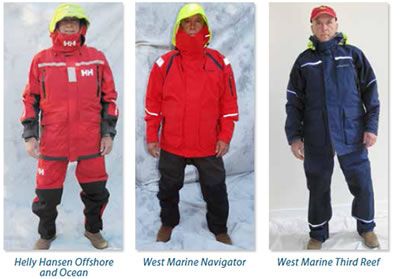
West Marine Navigator
The West Marine Navigator jacket and Navigator bibs are a formidable foulie combo designed for coastal sailing. The Navigator jacket is waterproof, windproof, and breathable.
Made of 100-percent nylon, it has a water-repellent finish and is unlined to speed up drying time, according to West Marine. The nylon shell feels much lighter than the other foul-weather jackets in the same $200 price range. The fluorescent, high-visibility hood is not as stiff as some others we tested.
The jacket features two cargo pockets with flaps and Velcro closures; two zippered, lined hand-warmer slash pockets; and an interior zippered pocket for small items.
The drawstring at the waist is easily adjusted and helps keep out wind and spray. The hood drawstring works easily as well. The Velcro tabs on the Navigator jacket front and cuffs are thinner than other brands, and as a result, were less reliable in tests. The sleeves are fitted with adjustable storm cuffs designed to keep out wind and water. The internal seals are bolstered by Velcro straps on the outside of the sleeves that tended to loosen after some activity by the wearer.
The Velcro strips at the neck were doubled in width, and even larger Velcro patches secure the storm flap on the collar. The inside of the collar, which is over 6 inches high, offers mesh fleece for breathability and comfort. The jacket has reflective patches on the hood and shoulders, as well as piping on the sleeves and back.
The Navigator bibbed trousers are rugged, but contoured to reduce windage. Wide, elasticized shoulder straps make for a comfortable fit and are easy to adjust with Velcro ends. The trousers also feature an internal gusset and wide Velcro straps at the ankle closures. The trousers passed the abrasion resistance test with flying colors, mostly due to the 500D Cordura seat and knee reinforcement.
Bottom line: The Navigator jacket and trousers can compete with the best in their price range ($394 for set), providing the coastal sailor with all-around protection and comfort.
West Marine Third Reef
The West Marine Third Reef jacket is designed strictly for coastal and inshore sailing. Like the Navigator, its made of 100-percent nylon with a water-repellent coating.
Described as windproof, waterproof, and breathable, it has a heavy-duty front zipper and pockets with zippers and pull tabs. During the wind resistance testing, testers could detect air penetrating the fabric.
Bottom line: The Third Reef jacket and trousers are best suited to the cash-strapped sailor who doesn’t plan to venture far from the coast.
Conclusion
All of the foul-weather gear held up to our testing, which often exceeded what might be encountered during a single sailing season.
For those with deep pockets and those bluewater voyagers willing to make a serious investment in foul-weather protection, we Recommend the Helly Hansen Offshore jacket and Ocean trousers. The Offshore kit was the top performer, but it exceeded our $500 theoretical budget, making the Gill OS2 jacket and bibs ($550 for set) the Best Choice. Its the top pick for those whose cruising kitty can’t cover the hefty price tag of the Offshore.
For performance and price, the Helly Hansen Skagen jacket at $375 and the $190 Crew Coastal bibs got the Budget Buy picks.


































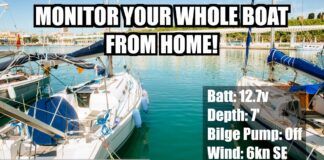



Hi. Any reason why you didn’t include Navis Marine Offshore Sailing Jacket Bib Pants combo many speak highly of ($349)?
What are your thoughts about that combo?